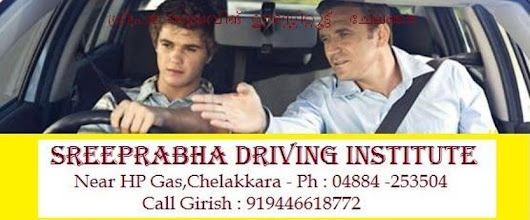DEFENSIVE DRIVING
A defensive driving course is designed to help people operate a motor vehicle with the skills to avoid an accident in a situation where one may occur. Defensive driving teaches advanced skills and awareness not initially taught to new drivers. The goal of a defensive driving course is to train individuals to be a proactive driver in order to avoid dangerous road situations or the poor conduct of other drivers. Drivers usually enroll in defensive driving courses to brush up on skills or to qualify for car insurance discounts. Most often individuals are referred to defensive driving courses after being ticketed for a moving violation or having been in an accident. Depending upon the laws of the municipality, the documented completion of a defensive driving course can allow for a dismissal of the ticket. The main benefit of defensive driving is its power to reduce or keep points from showing up on a driving record. Individuals with tickets also experience higher insurance rates, so a nominal fee for completing a defensive driving course online makes for an easy choice to keep rates down. Defensive driving not only saves money but also improves overall skills and awareness, making you a safer driver. Defensive driving courses are taught across the United States and are sometimes called traffic schools, depending upon the regional area. Changes in technology and the economy over the past two decades, have turned the defensive driving course into a private industry giving drivers a choice.

What Are Defensive Driving Skills?
Defensive driving skills are those which let you compensate for the careless or irresponsible behaviors which can endanger all the other responsible drivers around you, and defensive driving skills often result from simply operating your car with common sense and keeping your eyes and ears open for the first signs of trouble developing among the drivers around you.
Common sense-based defensive driving will let you, first of all, avoid trouble when someone else on the road decides to do something stupid. You can learn defensive driving skills through a defensive driving education program, designed by expert drivers especially to save responsible drivers from the irresponsible ones. You will be introduced to defensive driving methods which will let you recognize and avoid potentially dangerous road conditions, so that you remain aware of what is going on around you and can respond appropriately to any difficulties.
What is Defensive Driving?
Safe driving is a form of training for motor vehicle drivers that goes beyond mastery of the rules of the road and the basic mechanics of driving. Its aim is to reduce the risk of driving by anticipating dangerous situations, despite adverse conditions or the mistakes of others. This can be achieved through adherence to a variety of general rules, as well as the practice of specific driving techniques.
Defense Driving Tips:
There are some very important defensive driving skills
Let other people know of your maneuvers in advance:
Unforeseen stops, turns and lane changes often lead to car accidents because they trap other people by surprise. Consequently one of the main rules of defensive driving is to distinctly communicate to other people precisely what you are about to do. For this reason, it is critical that signal indicators and other driving lights are working. If they are not, check them right away. Otherwise, forget defensive driving.
Try to foresee the worst:
It may look distrustful and it's not the best regulation to follow but, in defensive driving, it pays to forestall the errors of other drivers on the road. For instance, many people routinely signalize a turn but don't turn at all. Meanwhile, others don't signalize at all and then unexpectedly turn. Many people give little or no attention to stop signals or attempt to run red traffic lights.
Being predictable prevents car accidents:
Having all your indicators in good working order is great, but they will not help if you can't be predictable. Defensive driving is closely associated with being predictable - you do what you are expected to do. If you are signaling a left turn, then turn left. Do not signalize that you are going left then without warning turn right. And, by no means, don't keep signaling a left or right turn then just going straight ahead. In defensive driving, one certainly not makes a move that confuses other drivers. Wonders are great, but certainly not when you are driving.
You should know where you want to go:
The first regulation of defensive driving is know where you want to go. There's nothing quite as hazardous as making an unlooked-for stop or turn, which is something that people do when they are not sure about where they are headed. Ditto for driving not very fast then without warning zooming rapidly. If you are not sure where you want to go, probably you're confusing other people on the street as well. If you do not know the way, stop your car and regain your bearings. Check a map or maybe even ask people for directions. The worst thing you can do is ride about aimlessly. That is like looking for problems.
Make signaling your usual practice:
One of the best defensive driving practical methods is to signalize each time you make maneuvers or change traffic lanes. In such way, you never trap other people by surprise. Make signaling a usual practice. Even if the road appears to be abandoned and there appear to be no other cars around, signaling your intention is without exception a good defensive driving practice.
Warn others as you stop or slow down:
When making a stop or slowing down, it's an excellent defensive driving technique to inform others in advance of your intent. This is specifically essential if the driver behind you is driving fast and approaching quickly.















